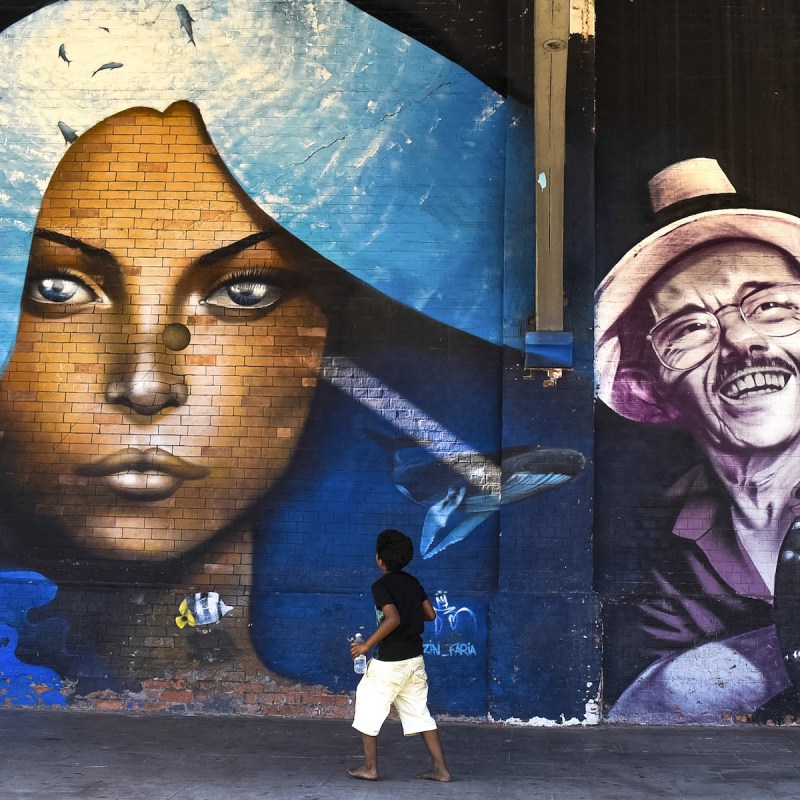
Street art is a form of artistic expression that has gained popularity worldwide. From the colorful murals of Rio de Janeiro to the political graffiti of San Francisco, street art can be found in cities and towns across the globe.
Videos by TravelAwaits
Street art provides a platform for artists to express creativity and share unique perspectives with society. It can also serve as a form of social commentary, reflecting the culture and history of a community. Street art has become an integral part of the urban landscape, adding color, vibrancy, and creativity to cities around the globe.

5 Cities Around The World With Vibrant Street Art Subcultures
1. Mission District, San Francisco
The Mission District in San Francisco is a thriving hub for street art enthusiasts. The neighborhood’s intriguing murals, graffiti, and other forms of street art showcase the creativity of local and international artists and reflect the city’s diverse culture and history.
The Mission’s street art scene began in the 1970s and ‘80s when artists used the neighborhood walls and buildings as a canvas for political and social commentary. Today, the Mission’s street art scene continues to evolve and thrive, with artists using the city walls and public spaces to showcase their creativity and express their unique perspectives.
Some of the most popular street art pieces in the Mission include the Women of the Resistance mural, the Carnaval mural, and the Clarion Alley mural. The Mission’s street art scene is a testament to the neighborhood’s creative spirit and cultural heritage. It is definitely worth exploring for anyone interested in urban art.
2. Galway, Ireland
Galway, a small coastal city on the west coast of Ireland, is known for its vibrant art scene and colorful street art culture. Local artists have transformed the city’s walls, alleyways, and buildings into a canvas of creative expression, making Galway a hub for street art enthusiasts.
One of the most iconic pieces of street art in Galway is the Galway Lobster mural, located on the side of a building in the city center. The mural, created by artist Joe Caslin, depicts a giant lobster holding a briefcase and symbolizes the city’s economic and cultural growth.
Other famous street art pieces in Galway include the colorful “Love Lane” alleyway, the whimsical Hare mural, and the Monto mural, which pays homage to the city’s former red-light district.
The street art culture in Galway is not just limited to local artists; international painters have also contributed to the city’s art scene. Galway hosts the annual Galway International Arts Festival, which brings in artists worldwide to showcase their work.
Galway’s vibrant street art culture is a testament to the city’s creative spirit and artistic community.

3. Plovdiv, Bulgaria
Plovdiv, a historic city in Bulgaria, is gaining recognition for its street art scene. The city’s streets are adorned with colorful murals, graffiti, and other forms of street art that display the imagination of local and international artists.
One of Plovdiv’s most famous street art pieces is the Alyosha mural, which depicts a Soviet soldier located on a city center building. The mural is controversial, as it symbolizes Bulgaria’s communist past and has sparked debates about the country’s history and identity.
Other popular street art pieces in Plovdiv include the Bubbles mural, the Kapana neighborhood, and the Birch Forest mural. These pieces showcase the diversity of Plovdiv’s street art scene, with different styles and themes represented throughout the city.
Plovdiv has become a hub for street art enthusiasts in recent years, with tours and events dedicated to showcasing the city’s art scene. The Plovdiv Street Art Festival, held annually, brings together global artists to create new pieces and celebrate the city’s diverse culture.
Plovdiv’s street art scene reflects the city’s creative spirit and cultural heritage. It is definitely worth exploring for anyone interested in urban art.
4. Rio De Janeiro, Brazil
Rio de Janeiro, known for its vibrant carnivals and beautiful beaches, is also home to a thriving street art subculture that reflects the city’s rich history and diverse art, music, and literature. The origins of street art in Rio de Janeiro can be traced back to the 1960s and ‘70s when the country was under a military dictatorship. Street art was used as political protest and resistance against the oppressive regime.
In the 1980s and ‘90s, street art in Rio de Janeiro began to evolve into a more diverse and colorful expression, with artists using the city walls, buildings, and public spaces to showcase their creativity. One of the most famous street art pieces in Rio de Janeiro is the Etnias mural, created by artist Eduardo Kobra for the 2016 Olympic Games. The mural depicts faces of five Indigenous people all from different continents, symbolizing the diversity and unity of humanity.
Today, Rio de Janeiro’s street art scene continues to thrive, with artists from all over the world coming to the city to create their work. The city’s streets are adorned with colorful murals, graffiti, and other forms of street art that reflect its eclectic mix of cultures and traditions. The building facades are also famous for being brightly coloured. Rio de Janeiro’s street art scene is a testament to the city’s creative spirit and cultural heritage and is worth exploring.

5. Berlin, Germany
Berlin’s street art scene is one of the most vibrant and eclectic in the world. The city streets are adorned with colorful murals, graffiti, and other forms of visual art that reflect its rich history, culture, and political climate.
From the iconic East Side Gallery — a 0.8-mile-long section of the Berlin Wall that exhibits over 100 murals by artists from around the world — to the lesser-known back alleys and abandoned buildings that serve as canvases for local artists, Berlin’s street art scene is a true reflection of the city’s creative spirit and artistic community.
Other popular street art pieces in Berlin include the Pink Man mural in Mitte, the Cosmonaut mural in Treptow, and the Secret Wars mural in Kreuzberg. These pieces showcase the diversity of Berlin’s street art scene, with different styles and themes throughout the city.
Conclusion
Exploring street art around the world is an experience like no other. It provides an opportunity to immerse yourself in the creative expressions of local and international artists and witness how street art reflects a community’s culture, history, and identity.
The vibrant colors, intricate details, and unique perspectives featured in street art pieces can captivate and inspire audiences from all walks of life. Additionally, street art often appears in unexpected places, adding an element of surprise and discovery to urban exploration. Whether you’re a seasoned art enthusiast or simply curious about the world around you, exploring street art around the globe is an adventure worth taking.
